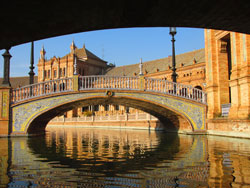This spring break, myself and four other Monmouth students travelled to Guatemala as volunteers for an organization called Salud y Paz. The project consisted of teaching Guatemalan’s studying to become community health care workers, about health and helping to build a clinic.
Guatemala is a country known for its outstanding culture, traditions and exotic environment. Therefore, in order to achieve both tasks assigned during this trip we had to first read and research about Guatemala.
The five of us attended a class called HE-398, Guatemala Public Health, which met once a week with Faculty Director of Study Abroad, Dr. Christopher Hirschler, to discuss several articles we had read about Guatemala´s health care system, the needs within the country, the divisions of society, violence, history and the current situation.
All of this was fundamental in helping us understand all that we were going to experience. In addition the readings helped us empathize with the Guatemalans we would work with. This trip wasn´t about us, it was about the people who were in need of opportunities that would help them escape or overcome the extreme poverty they lived in.
An important aspect of this experience was the language. I am lucky to be fluent in Spanish. Even though it is not a requirement for the course it is recommended. Being able to socialize with the Guatemalans we worked with added richness to my experience. Being bilingual opens a large range of opportunities for travelling, learning and providing you with different perspectives of what is considered normal or common.
Melissa Sparacio, a senior biology student, said, “I wish I was fluent in Spanish so I could have communicated with Guatemalans and widened my experience abroad.”
Learning a new language is not only about new words and different word order: language is about another way of socializing, it´s about people and cultural enrichment.
Our trip took us to different villages and cities in Guatemala, giving us a broader perspective and point of view of the social divide and the needs of the Guatemalans. First we headed to Chichicastenango where we witnessed the largest open-air market in Latin America. On market day the whole city was covered with all the colors of the rainbow from black to pink, orange, yellow, white, blue and purple. The clothes of the Guatemalans, and even the cemetery, were full of color. It was both sad and impressive to see how the children had to earn money by selling hairbands and bracelets.
Once you exited the hotel, a group of kids surrounded us and presented themselves in English and tried to make us promise that we would buy them something later.
I had the opportunity to talk with Marisol, a 13-year-old girl who sold bracelets in the market. She handled school, studies, sports, selling and helping at home. (Her father had died half a year ago, her mother wanted her to quit school and she got bullied when she wore pants instead of a skirt.)
Getting to know the people at the market gave me a first hand of information of what life is like for many Guatemalans. It also left me with a sense of sadness and impotence, because the needs were so great and I could only help them by listening or buying their goods.
The next day, we went to camp Lemoa, a village next to a beautiful lake where Salud y Paz offered free health, hygiene and illness prevention classes three weeks a year in order to train mostly indigenous women from the highlands to become health promoters in their communities.
Jenies Grullon, a junior health studies student, said, “It´s definitely an experience that anyone interested in healthcare as a whole could benefit. It made an impact on how I view global healthcare and made me rethink my career goals.”
It was rewarding to contribute to the education of Las Amigas (a group of men and women from the age 16 to 65). In addition, we got to learn about edible wild plants, Mayan culture, traditions and their methods for water purification. Being able to give my presentation in Spanish and later on interact and understand what the professor taught them was important for me. It gave me a better understanding of what they were learning and how religion, both Mayan and catholic had a great say in all that was being learned.
One of the moments I remember the most occurred when we talked to a man that was making adobe bricks on the shore of the lake in Lemoa. I will never forget his expression of surprise when I asked him how to do it. It was unconceivable for him that we didn´t know something as basic and as building a house and knowing what materials to use or where to find them.
Sometimes, we feel that what we do and know is the normal thing to do or the rule to follow, just because it´s what we know. Simple details such as that moment made me rethink our culture and education. If you think about it, would any of the people in the developed countries be able to survive in the forests next to their houses? We are losing our survival skills, and we have an overreliance on society and machines to do everything for us.
The rest of the trip was held in Camanchaj, Panajachel, in the construction site and then in Antigua visiting the city. At the clinic we were constructing, there was also a school. We got to play with the children. who were no older than seven years old.
In addition, I got to talk with the local contractors and learn the basics such as making cement or laying tiles. On our second morning of construction we took a boat in the Lake Atitlán to see the sunrise. It was a breathtaking view: the sun, mountains and three enormous Volcanos surrounding the lake. On our last day we hiked the Pacaya Volcano, an awesome active volcano near Antigua and two days before we got to see the sunrise from the Lake Atitlán.
Nine days were not enough and I hope to go again and continue helping Salud y Paz. There is still so much to do there and so many other places within the Guatemalan mountains to be discovered.
Dr. Hirschler said, “An expression we use at the clinic is ‘poco a poco’ – little by little. Over the five spring breaks that I’ve been working in Guatemala we’ve made significant improvements to the clinic and imparted valuable health education.”
Service-oriented study abroad programs are fantastic experiences. People can discover new horizons and get to know themselves better. I encourage everyone to do a service trip at least once. However, I warn you that if you do, you are not going to want to stay still in one place anymore.



